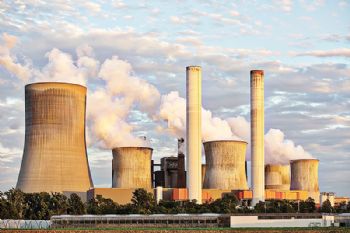
According to analysis by Carbon Brief — a UK-based Web site covering the latest developments in climate science, climate policy and energy policy — the electricity generated in the UK last year was the lowest annual total in a quarter of a century.
At the same time, output from renewable sources rose to another record high, generating an estimated 33% of the UK total in 2018.
In combination with nuclear, renewable sources contributed 53% of UK generation in 2018, with the share from fossil fuels at its lowest ever.
Lower per-capita electricity generation and cleaner supplies have contributed roughly equal shares to the reduction in power-sector CO
2 emissions since demand peaked in 2005.
This has helped to cut UK greenhouse-gas
emissions overall, even as the economy grows and the population rises.
Carbon Brief (
www.carbonbrief.org) says the reduction in the UK’s per-capita electricity generation has saved 103 terawatt hours (TWhr) since 2005, slightly more than the 95TWhr increase in renewable output over the same period.
If this electricity had instead been generated from gas, CO
2 emissions for the entire UK economy would have been around 80 million tonnes (MtCO
2) 20% higher than the 368Mt CO
2 total ‘seen’ in 2017.
If it had come from coal emissions, it would have been some 180Mt CO
2 — some 50% higher.
Carbon Brief’s analysis of UK electricity generation in 2018 is based on figures from BM Reports, Sheffield Solar and the Department for Business, Energy and Industrial Strategy (BEIS).
Carbon Brief analysis showed that in 2017 — for the first time — more than half of UK electricity generation was low-carbon; and that some 335TWhr of electricity was generated in the UK in 2018 (the last time UK generation was this low was in 1994).
Generation in 2018 was some 63TWhr (16%) lower than in 2005 (a reduction equivalent to 2.5-times the output of the new nuclear plant being built at Hinkley Point in Somerset), despite the UK population increasing by 10% to 66 million people.
There are several known factors contributing to the decline in UK electricity generation and demand since 2005. They include regulations on the energy efficiency of products, energy-efficient lighting, environmentally conscious consumers and economic restructuring, including the offshoring of energy-intensive industries.
For example, low-energy light bulbs can cut electricity use by up to 90%, while newer “white goods” can use up to 75% less electricity than the oldest models.